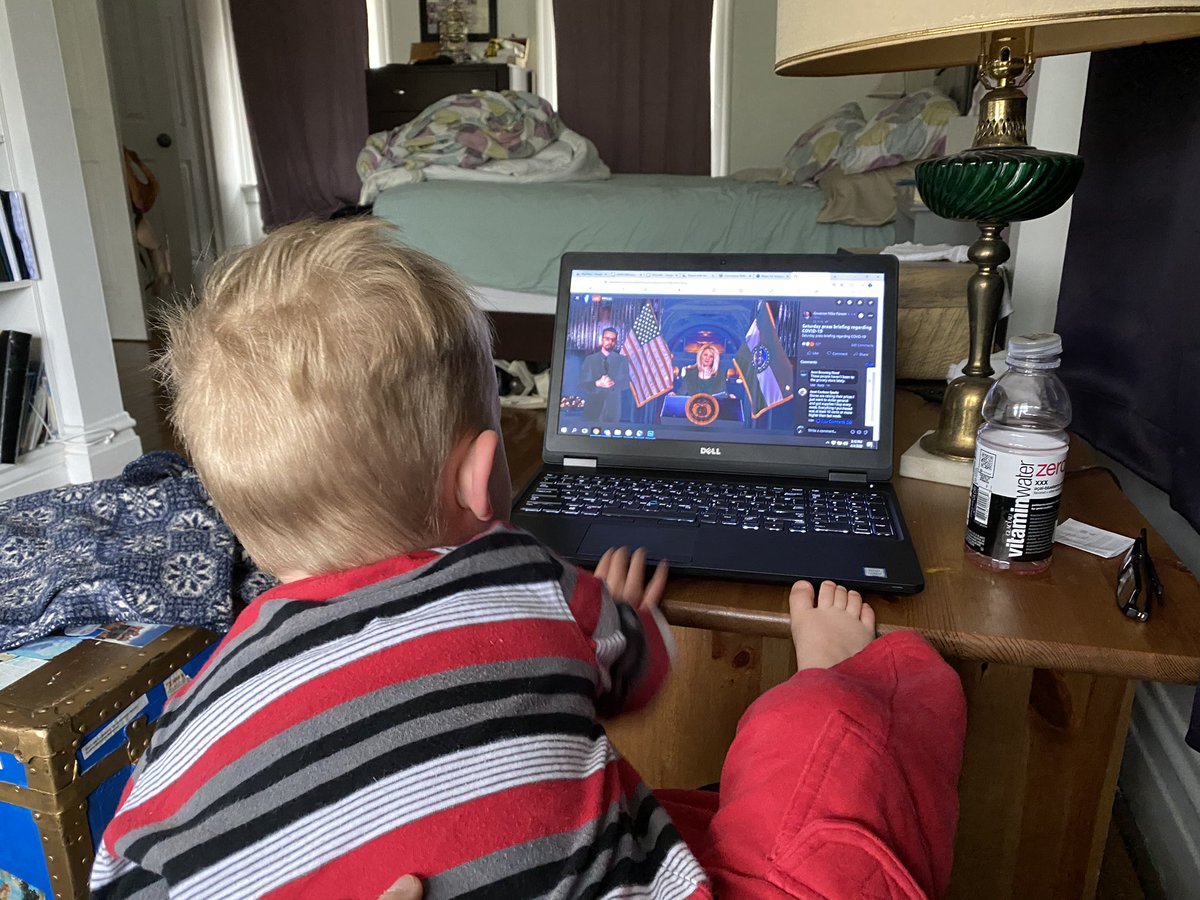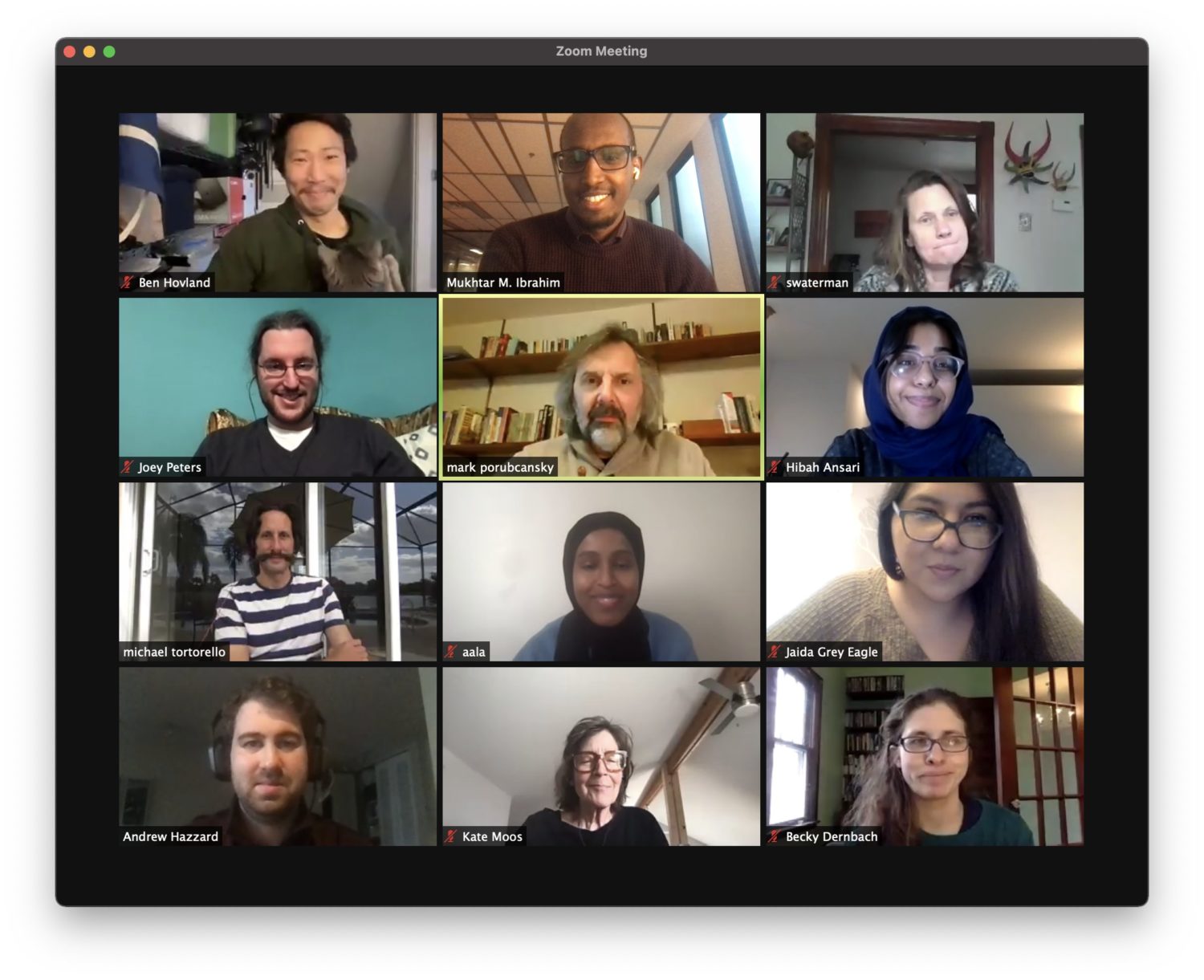Just after the NBA announced it was shutting down last March, the staff of the Orlando Sentinel started getting emails that they might need to work from home.
They soon called a meeting and announced they’d give it a try.
“We’ll see each other in a couple weeks,” managing editor Roger Simmons told staff. “Which is what I actually thought … and then our company made the decision that we were going to leave our newsroom permanently.”
The next time staff was all together was at the end of August for a socially distant champagne toast to say goodbye to the Sentinel’s downtown offices after owner Tribune closed some newsroom office spaces.
Most journalists have not said goodbye, forever, to the spaces where they worked and met. But since last March, a lot of us have worked from home without the hum of phone calls and conversations, shouts of news, sad desk lunches, coffee breaks, tedious meetings, supply runs or any of the other things that make a workplace an actual place to work.
It’s been a long, tragic year since our homes became our offices.
The pandemic isn’t over. But as access to vaccines spreads, newsroom leaders are starting to talk about when to come back. The question isn’t just about when, though. Or it shouldn’t be.
For an industry where innovative workspaces mean snack rooms and natural lighting, maybe it’s time to look at what newsrooms are, were, and could actually be. We’ll be exploring that as part of our series, Recovering the News.
This week — what should stay from our quarantines? And what should go from the before times?
Tell me what you think, and I’ll include your responses in my newsletter. And this Wednesday, please join my colleague Joie Chen for a free 45-minute On Poynt on what we’ve lost and gained from a year working from home.
Here’s what I heard from journalists around the country.

Amanda Zamora is the co-founder and publisher of The 19th*, a nonprofit newsroom covering gender, politics and policy. (Photo courtesy Amanda Zamora)
Lost
Last spring, Mukhtar M. Ibrahim had a newsroom ready for the Report for America journalists who’d soon be joining him at the Sahan Journal, a digital nonprofit newsroom “for and about immigrants and communities of color in Minnesota.” Instead, they’re all working from home.
Being in a community can’t be replicated on Zoom, said Ibrahim, the editor. The Sahan Journal planned last year to open its newsroom and invite the community in. That was lost.
“We cover community, that’s our model — to be really embedded — and that has impacted our work.”
After a press conference declaring the coronavirus a global pandemic, Alexandra Leslie looked up at her boss at Providence, Rhode Island’s WPRI.
“I think I need to work from home.”
Leslie, who has cystic fibrosis and is high-risk, got an email that night telling her to start working remotely the next day.
At first, she used a floor lamp for lighting and stacked an iPad on boxes to record. And she worried — how could she do her job reporting on her community when she couldn’t be in her community?
St. Louis Public Radio had a meeting that week where staff learned they’d most likely be working from home. The next week, political reporter Jason Rosenbaum was off work for his son’s spring break. His son didn’t go back to school in person for the rest of 2020.
And Rosenbaum lost a dedicated, and quiet, workspace.
“Because I have small children and because the small children do not get less demanding just because you’re on deadline, sometimes recording these stories on strict deadlines was a pretty big challenge.”
Staff at The 19th*, which launched in January, lost the chance to bond in person as a startup newsroom.
“What we are craving is just the connection and relationships that comes from greeting each other in the morning,” said Amanda Zamora, co-founder and publisher, “from goofing off at the beginning of a meeting, from walking to coffee in the afternoon, from being able to spill over after a long day and grab a drink if you like.”
We’re craving informal connections, she said.
Those were lost in Orlando, too.
It’s hard to read body language in a Microsoft Teams call, Simmons said.
But working from home has taught us a few critical lessons.

St. Louis Public Radio’s Jason Rosenbaum was joined by his younger son to watch a COVID-19 briefing in April 2020. (Courtesy: Jason Rosenbaum)
Found
The pandemic forced Zamora to think about the needs of their employees who work remotely full time, she said. As a manager, she wouldn’t have had as much empathy for her remote colleagues if she hadn’t lived it herself.
The team based in Austin likely would have bonded fast in person, leaving the remote people to catch up. The 19th* has no formal plans to open its office this calendar year, though people can sign up to go in three at a time.
“I do think that we will just think really differently when we do get back to having that Austin hub.”
Meetings will all start on screens, giving everyone the same footing. And they’ll keep the informal ways they’ve connected remotely like the book club and optional Wednesday happy hour.
At the Orlando Sentinel, one manager is working remotely out of state because of an illness in the family. That’s something they’d never have considered allowing before, Simmons said.
In a recent staff survey, the Sentinel asked coworkers what they wanted in potential new physical space once it was safe. A small group wanted to be back in the newsroom all the time. A small group never wanted to work there again. But the majority, 75%, want a mix.
Staff has been more productive without commute time and with flexible hours, which they proved when they covered the Florida primary in August, Simmons said.
At St. Louis Public Radio, Rosenbaum couldn’t cover the election in person the way he has for the last 15 years. The result wasn’t so bad.
“I ended up talking with more people than I had in previous election cycles.”
Those people were regular people, too, not politicians or political stakeholders.
At WPRI, Leslie got to know coworkers she’d never had the time to talk to before while out all day on assignments. She also discovered a beat that she excelled at from home — covering the vaccine rollout with multiple screens and an eye on social media.
And the Sahan Journal will keep covering news the way it did last summer after George Floyd’s death. They found what other newsrooms overlooked, including stories about the young second-generation residents at the forefront of protests.
That coverage brought the Sahan Journal its highest traffic yet. It showed the community what it was about. And it brought in new donations and support.
Keep
Because of the pandemic, we lost the chance to fully cover a community and to foster work communities. We lost child care. Likely some boundaries. Some McClatchy and Tribune newsrooms lost their physical spaces.
And because of the pandemic, we know what it’s like to work from home, the technology that makes it possible, and that fluidity can be a strength.
In September, the lease for the Sahan Journal’s space is up. Ibrahim would like to have a space where his team can gather, but it’s more important for reporters to be embedded in the communities they cover.
“If you’re really invested in getting stories, especially from underserved communities, showing up and getting to know the community, where they meet, going to church or mosques or events, all of that is where good stories are popping,” he said. “And if you’re not present and visible in those places, I feel like the only time people see you is when a tragedy happens.”
When it’s safe to meet again, Ibrahim is considering experimenting with rotating weekly meetings at the organizations that serve the people they cover. They’re not going back into the newsroom. They’re going back into the community.
The Orlando Sentinel has a new, smaller home at the University of Central Florida’s downtown campus. Having journalists spread into the suburbs and surrounding areas means those places have gotten covered better. They’re also looking for ways to partner with community organizations to build connections on purpose.
It’s kind of like covering a hurricane, Simmons said. You need some people to stay at home and some in the building to get a full sense of what’s happening.
Recording remotely has been tough, St. Louis Public Radio’s Rosenbaum said, and recording a podcast isn’t the same over Zoom. With two small kids, he’s ready to get back to the office.
“But I do think we have shown that we can do this job with more flexibility when we need to.”
Leslie, at WPRI, sees the value of cross-state Zoom interviews when, for instance, news breaks at 9, a source is 45 minutes away and the broadcast is at 10. She’d also like to see more accommodations for sick time at newsrooms around the country, letting people who don’t feel good really stay home and rest, keeping their coworkers safer, too.
And at The 19th*, Zamora is ready to get back on the road for community events when it’s safe.
“The good news is that we really learned how to do virtual well. I just think that there’s gonna be no replicating the magic that happens from having a shared experience with human beings.”
Her team, at least, is keeping Zoom-free Fridays.
And no one knows what will become of the dogs that have adjusted to having their people around all the time.
“I’m looking at my dog right now who thinks we are the same species,” Zamora said of her rescue dog, Ellie Rose. “I don’t know what she’s going to do when I start leaving the house for long stretches of time.”
Leslie’s in the same situation with her puggle, Eddie.
“He has benefited the most out of anyone in this pandemic.”


The Orlando Sentinel has a small crew working from their new space at the University of Central Florida. (Photo courtesy Roger Simmons)
This project received support from The Knight Foundation.
Correction: The Orlando Sentinel is owned by Tribune. A previous version of this story got that wrong. We apologize for the mistake. It has been corrected.








